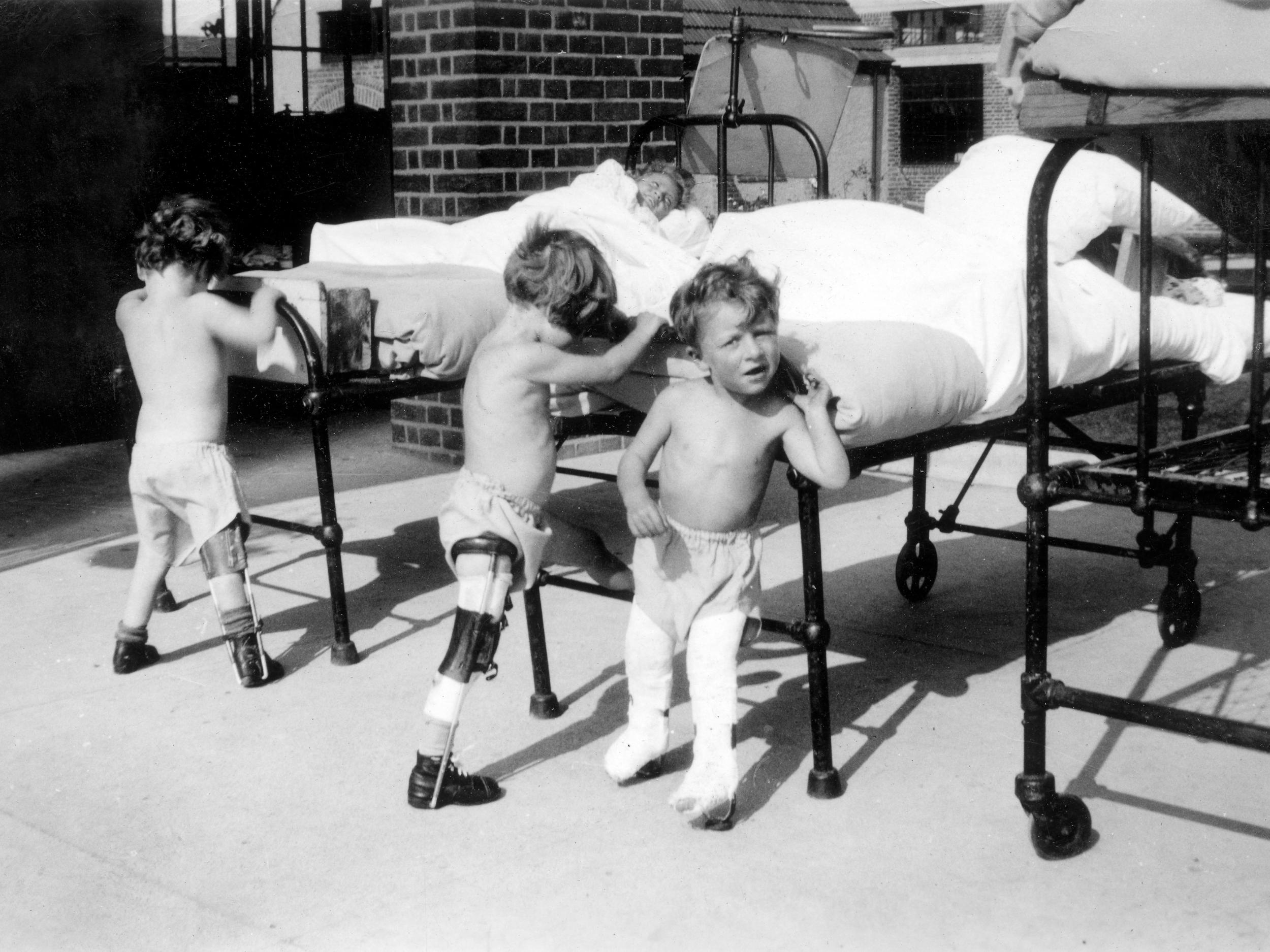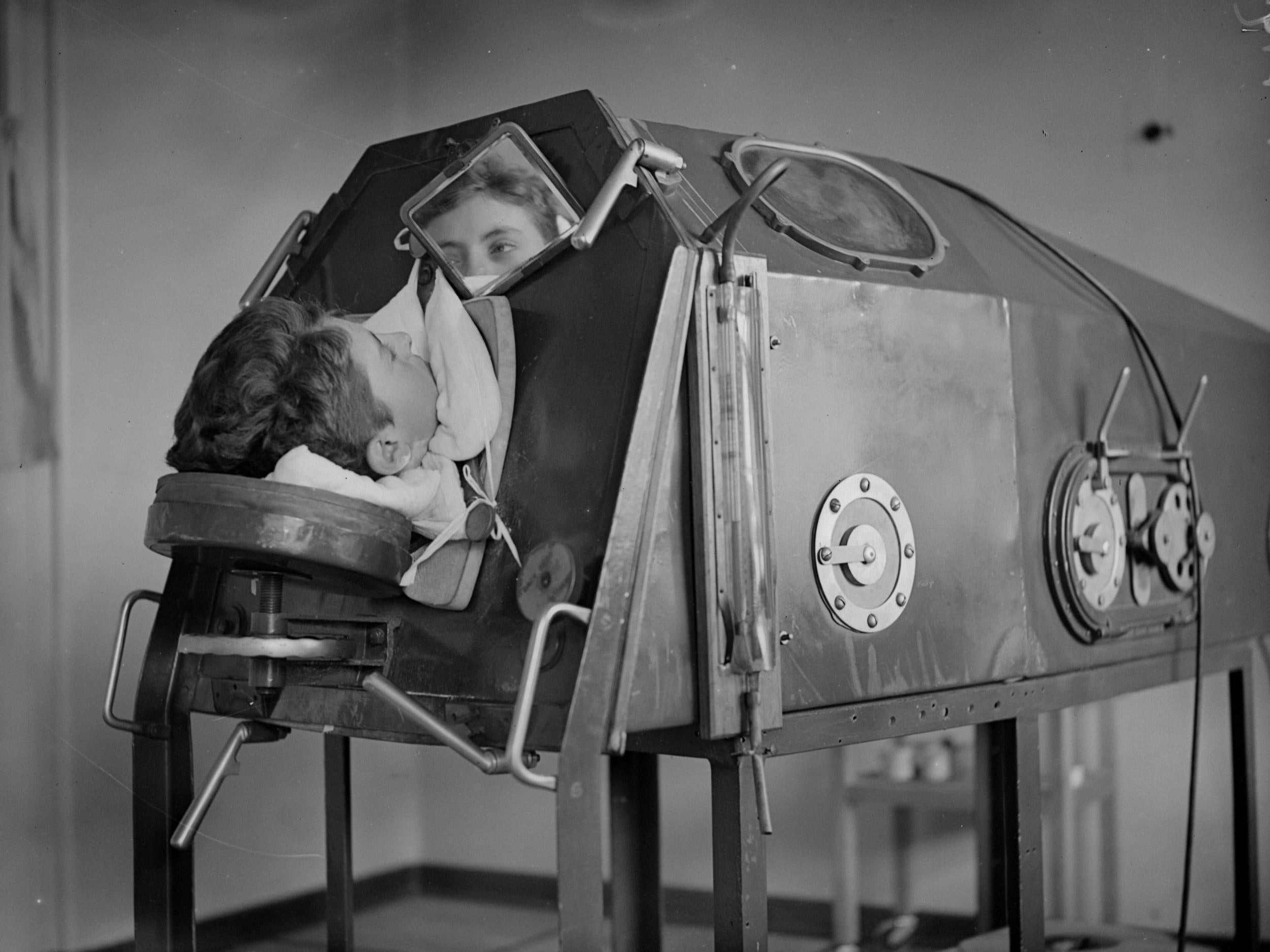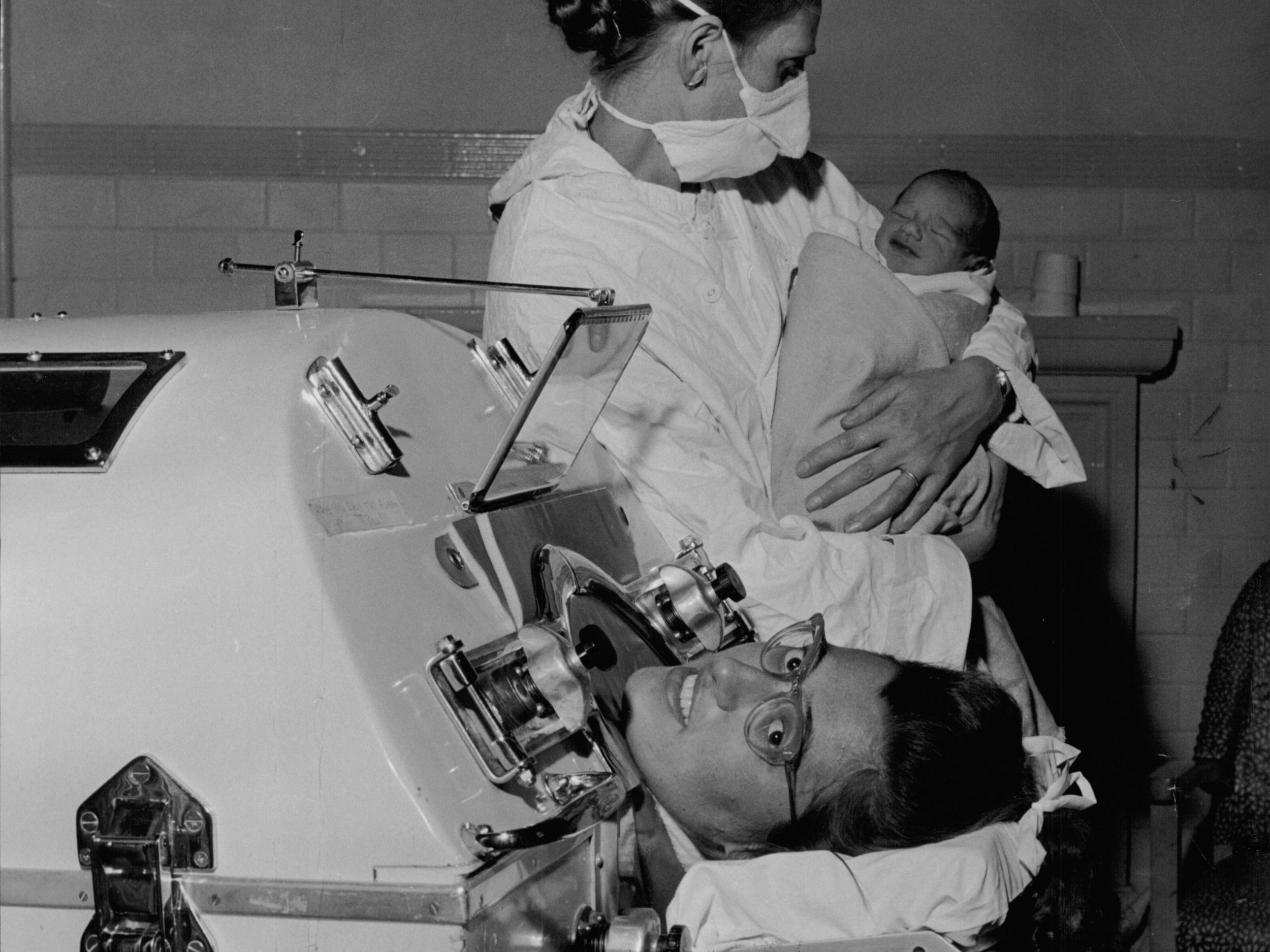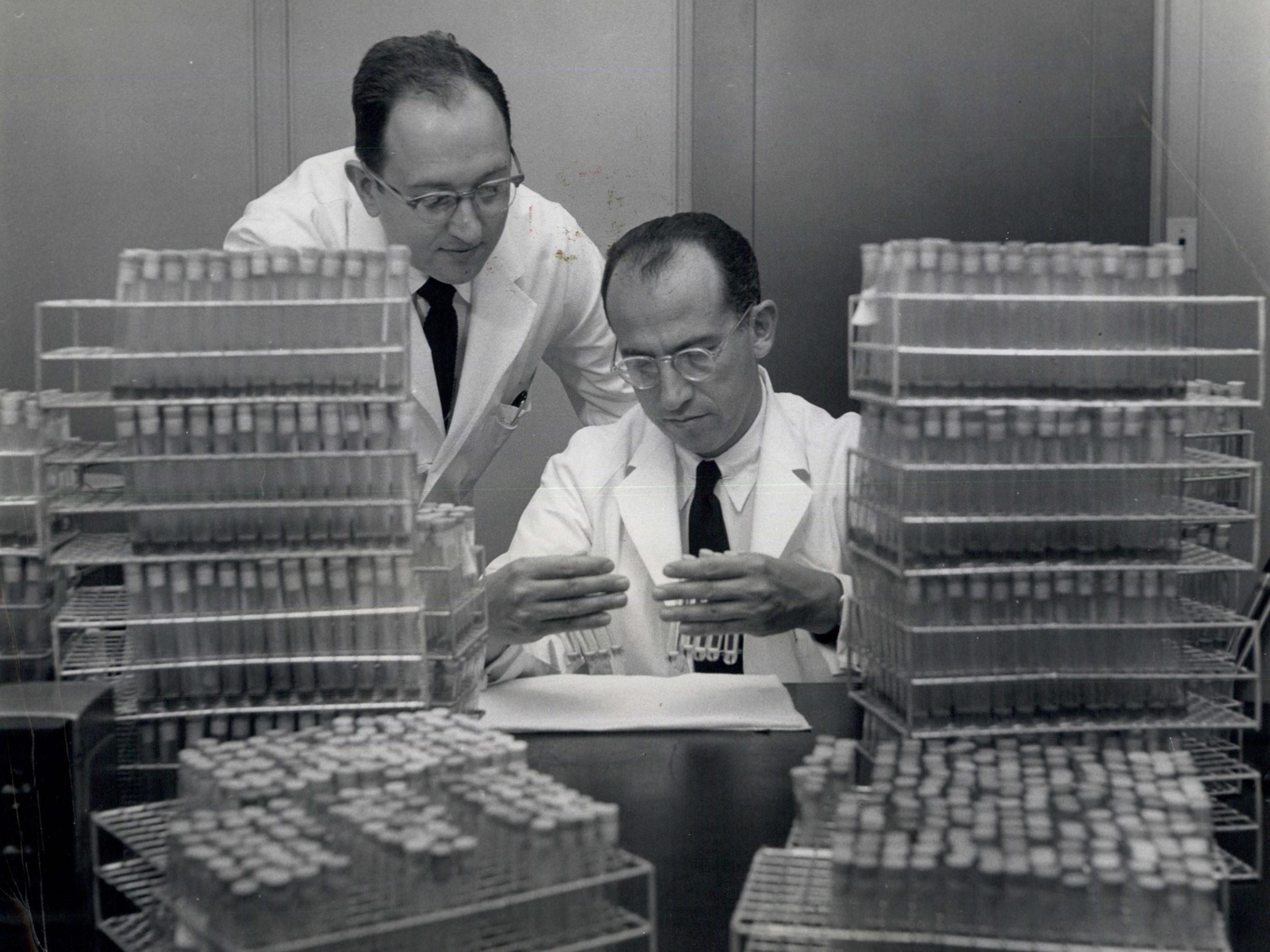Polio then and now: the story of a crippling disease on the verge of worldwide eradication
Virus invades nervous system and destroys nerve cells that control muscles, especially in legs

Your support helps us to tell the story
From reproductive rights to climate change to Big Tech, The Independent is on the ground when the story is developing. Whether it's investigating the financials of Elon Musk's pro-Trump PAC or producing our latest documentary, 'The A Word', which shines a light on the American women fighting for reproductive rights, we know how important it is to parse out the facts from the messaging.
At such a critical moment in US history, we need reporters on the ground. Your donation allows us to keep sending journalists to speak to both sides of the story.
The Independent is trusted by Americans across the entire political spectrum. And unlike many other quality news outlets, we choose not to lock Americans out of our reporting and analysis with paywalls. We believe quality journalism should be available to everyone, paid for by those who can afford it.
Your support makes all the difference.A passage in Philip Roth’s novel Nemesis describes the horror of catching polio in the US town of Newark in 1944, when outbreaks of the disease were common and each summer was spent in fear of infection.
“Finally the cataclysm began – the monstrous headache, the enfeebling exhaustion, the severe nausea, the raging fever, the unbearable muscle ache, followed in another forty-eight hours by the paralysis,” it says.
Polio, or poliomyelitis, has existed for millennia. There is ancient Egyptian art which depicts a victim of the disease with a frail, deformed limb, using a staff for support.
While the paralysing effects of polio have always been devastating, outbreaks of the disease were relatively rare in the West until the late 19th century, when major epidemics swept Europe and the US.
In Roth’s story, everyone knows what polio is but no one knows where it comes from or how it spreads, with everything from flies to fast food blamed for its rapid transmission.
In fact it is passed on through contact with faecal matter, by drinking contaminated water and eating food that has been touched by the unclean hands, and sometimes through coughs and sneezes.

Once infected, the virus invades the nervous system and begins to destroy nerve cells which control the muscles, especially in the legs. If someone is paralysed by polio, there is a five to 10 per cent chance they will die when the disease reaches their respiratory system. There is no cure.
“He was there for three weeks before he no longer needed catheterisation and enemas, and they moved him upstairs and began treatment with steamed woollen hot packs wrapped around his arms and legs, all of which were initially stricken,” writes Roth, of one character’s experience.
“He underwent four torturous sessions of the hot packs a day, together lasting as long as four to six hours. Fortunately his respiratory muscles hadn’t been affected, so he never had to be moved inside an iron lung to assist with his breathing, a prospect that he dreaded more than any other.”
The iron lung was invented in 1928 by American physiologists Philip Drinker and Louis Shaw.
The huge ventilator, which left only the head visible, kept polio victims alive for a number of weeks while they recovered from the illness – but those left permanently paralysed could spend their whole lives encased in one.
Dawn Varma, a 20-year-old who was paralysed by polio when she was 10 weeks’ pregnant, even gave birth while she was in an iron lung.
A photograph from 1959 shows Ms Varma, the wife of an Indian scientist, inside the ventilator with a nurse tending to her healthy newborn baby, called Dilip.
In 1952, Jonas Salk developed an injectable polio vaccine and in 1961 Albert Sabin pioneered the oral vaccine drops, which had the advantage of spreading immunity through communities. These vaccines were highly effective, and cases in the US fell from 35,000 in 1953 to 5,300 in 1957.

The new oral vaccine was approved for emergency use in Hull in 1961 when an epidemic hit the city, with parents taking their children to improvised immunisation centres in their thousands to be given sugar lumps with the vaccine.
The success of mass polio vaccination in the developed world led doctors and international humanitarian organisation Rotary International to consider its potential elsewhere.
John Sever, head of the infectious disease branch at the US National Institutes of Health and a Rotary member, in 1979 proposed the idea to the group’s president, who wanted to develop a new project for Rotary that would involve the entire organisation.
“He asked my opinion of what we could do, and I wrote him: ‘If a single vaccine were to be selected, I would recommend poliomyelitis’. At the time, less than half the children in the world were receiving any vaccine,” Dr Sever told National Geographic.
“At the time, there had just been the last cases of polio to occur in the United States, and smallpox had just been declared to be eradicated. So people felt it was possible, that we could aim to eradicate polio.”

He said soon afterwards, “the legislative body that represents all Rotarians voted that we would make immunisation for the eradication of polio our number one priority throughout the world”.
That same year, Dr Sever and several fellow Rotary members travelled to the Philippines, where with the support of the government and health industry, they immunised around six million children.
Soon, the virus had been eradicated across the Americas – a remarkable feat that led Rotary International and the World Health Organisation to announce the goal of worldwide Polio eradication in 1988.
Now the disease is only endemic in three countries, Pakistan, Afghanistan and Nigeria, and there were just 37 cases last year. Optimistic health workers and organisations such as Rotary International say 2017 could be the year in which the world sees the last case of polio.
Serious challenges, including violent attacks on vaccinators by Islamists and poor routine immunisation coverage, remain.
But one day taking children to the doctor for polio vaccination drops may be a distant memory, and the long list of famous Polio survivors including Francis Ford Coppola, David Starkey and Mary Berry will fade into history.
The hope generated by this possibility is summed up in Roth’s novel when the protagonist listens to his grandmother reminisce about diseases of the past.
“His grandmother was remembering when whooping cough victims were required to wear armbands and how, before a vaccine was developed, the most dreaded disease in the city was diphtheria,” it says.
“She remembered getting one of the first smallpox vaccinations. The site of the injection had become seriously infected, and she had a large, uneven circle of scarred flesh on her upper right arm as a result. She pushed up the half-sleeve of her housedress and extended her arm to show it to everyone.”
Join our commenting forum
Join thought-provoking conversations, follow other Independent readers and see their replies
Comments